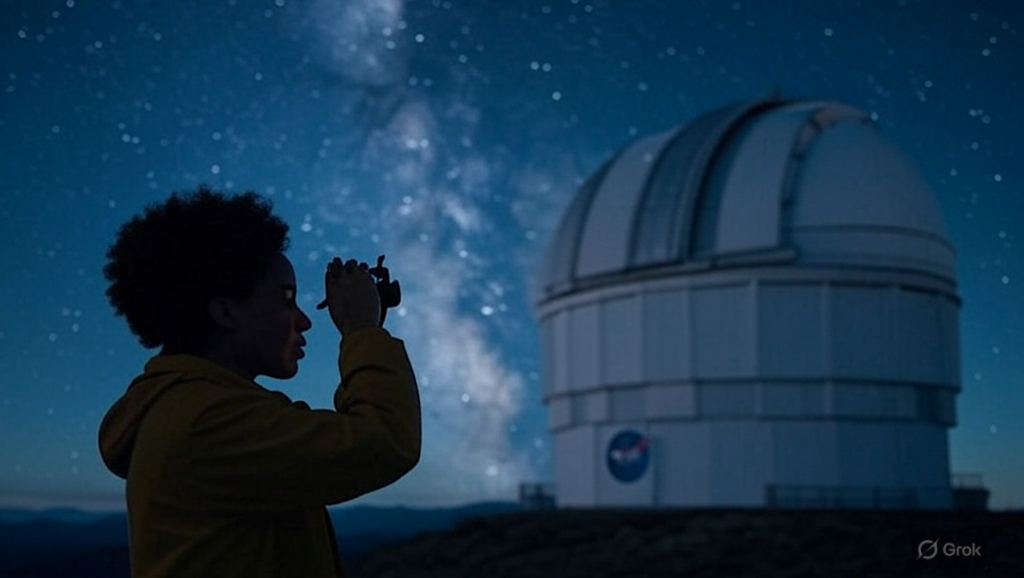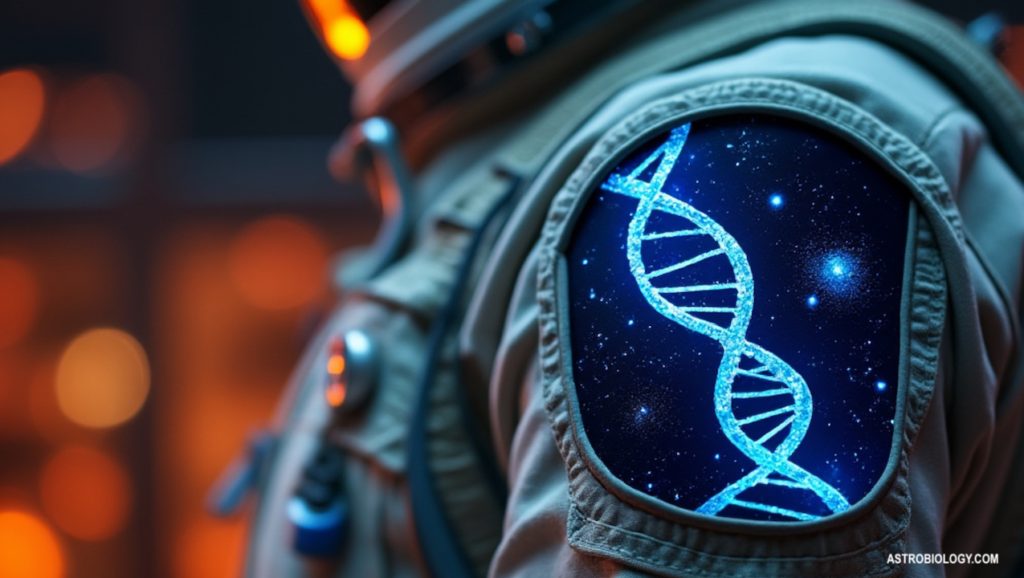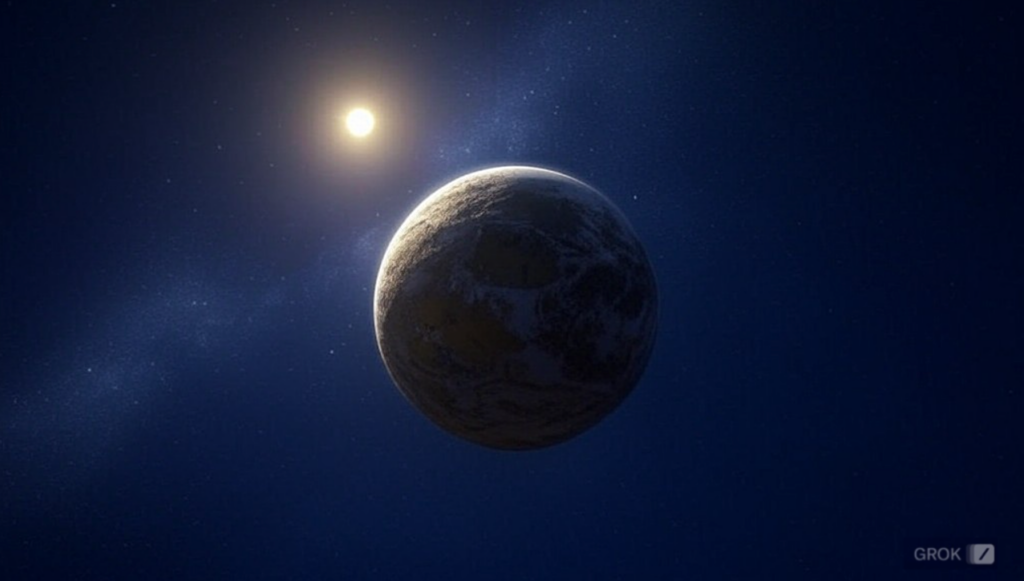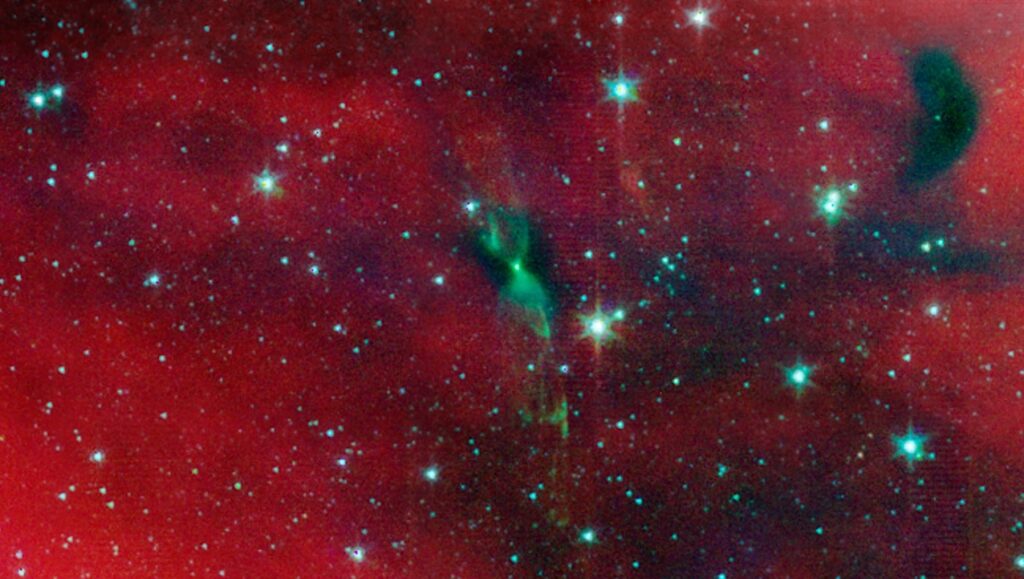Astrobiology Has Arrived: A Personal Recollection

I am currently attending the Astrobiology Science Conference where the world’s astrobiologists all meet to showcase their results and share ideas. There was a time, barely 20 years ago, when there were no astrobiologists. I was one of the lucky people to be present as this amazing 21st century discipline came into existence.
LIFE ON MARS !?!
In August 1996 the world stood still for a moment when NASA announced that its scientists had discovered possible fossils inside a meteorite from Mars. The unassuming ALH84001 meteorite was a non-de scrip dark rock had been found in Antarctica having been blasted from Mars to Earth millions of years ago.
David McKay (who is here), Everett Gibson, and Kathy Thomas-Keprta had been quietly doing their work on ALH84001 and had submitted a paper to Science. And then suddenly all hell broke loose. NASA was barley able to contain the news before it exploded and morphed into an infinite number of headlines, most of which were in accurate.
The notion that we had found life elsewhere was exciting. Everyone took notice – from the White House on down. After the dust had settled from that initial announcement a gathering consensus began to form. What did this mean? What are we going to do about it? We need answers NOW.
After wandering around in space for a while, this 4 billion year old meteorite had come to Earth 13,000 years ago. NASA had last visited Mars – rather almost visited it – in 1993. A few days before arriving contact was lost with Mars Observer. A propulsion system failure was later cited as the likely cause. Prior to this NASA had not visited Mars since 1976 when the Viking 1 and 2 orbiters and landers changed our view of Mars. Their mission was designed to observe the planet in great details and conduct tests on the surface to search for evidence of life.
The orbital recon done by Viking was a stunning success and revealed a world as varied and complex – if not more so – as our own. In many ways it was eerily Earth-like in other ways, very Mars-like. Surface operations were similarly revealing with the exception of answering the question of whether life is present. To this day scientists still debate whether Viking found evidence of life on Mars. The official answer was “No”. Dejected, NASA lost interest in Mars and focused on distant planets and astronomy instead. The public quickly lost interest as well.
While the Viking program’s smashing success sowed the seeds of disinterest in further exploration for decades, the ALH84001 announcement galvanized interest anew as to whether there was life elsewhere – and whether we should go look for it. Indeed you could almost feel the pent-up interest in the topic – and that it had been waiting far too long for an excuse to manifest itself once again.
Ironically, we know that ALH84001 and other meteorites like it that have been found on Earth originated on Mars due to data that came from Viking’s analysis of the martian surface. While Viking’s biology experiments failed to excite further interest in the search for life, data from its geology experiments would play a key role in doing exactly that 20 years later.
DO SOMETHING
After some special briefings at the White House NASA got the message that it needed to make up for lost time. NASA had an ongoing program that looked at the issue of life in the universe – but it was focused on limited topics. Known as “exobiology” the program had been holding its own since Viking. One early component of exobiology was SETI. After the famous mock outrage inspired by the antics of Sen. William Proxmire NASA was banned from listening or trying to talk to aliens.
The ALH84001 announcement landed in the middle of NASA’s exobiology program with a loud noise. No one quite knew how to respond since no one really expected the news. The natural thing to do was to get a bunch of experts together to talk about what to do. At this time NASA was also undergoing convulsions associated with “reinventing government”. NASA was trying to figure out what some of its field centers should do. NASA Ames Research Center was among the smaller centers that was without an overt focus. It was a jack of all trades and tended to have more exobiologists than other centers.
Ames needed something to focus on and no one knew how long the White House would be pushing NASA to look for life in the universe. For want of a word for this new focus, people felt that it should be more than what had been traditionally called “exobiology”. There was the inevitable meeting at NASA HQ and someone (the stories vary as to who) said “let’s call it “astrobiology”. It sounded new, trendy, and was not a word anyone had really defined (even though it had been used since the 1950s by a few people).
The big conference – called the Astrobiology Workshop – was held at NASA Ames in September 1996. I was there. In the following months several more large events were held – which I also participated in – often for weeks at a time writing and editing working group findings. Eventually a “roadmap” was devised and a NASA Astrobiology Institute was established at NASA Ames.
At some point early on I bought the domains astrobiology.org, .net, and .com at the urging of my NASA friends. I was going to start a website – but I also wanted to make certain that the astrobiology and UFO folks did not try and co-opt the word. For several years my astrobiology.com website actually hosted the abstracts for several Astrobiology Science Conferences since NASA did not yet know how to do this – I could never turn down a request from Lynn Rothschild anyway.
INVENTING ASTROBIOLOGY
In a nutshell we all struggled with what “astrobiology” should be. Was it exobiology with more money, exobiology-plus, should we call it exo- or bio-astronomy, or … just do the what the word itself said “astrobiology”? We all coalesced around a broad new concept which some of us called “big tent” i.e. any or all disciplines concerned with the origin, evolution, distribution, and expansion of life in the universe were deemed to be welcome. It quickly became obvious that we had all hit on something since everyone of those early meetings was filled to the brim with comments such as ” I never spoke about this with a [pick a discipline] before” or “despite our different backgrounds we have the same interest” or ” the synergies between otherwise separate disciplines were obvious”. And so on.
The process we went through was not exactly a precedent. When NASA was tasked to go to the Moon in the 1960s there was a sudden need for planetary scientists – except there were none. NASA had to create that discipline too – more or less from scratch. So Astrobiology had an earlier example to follow. But this was the 1990s not the 1960s – you know – the Internet and all that.
The NASA Astrobiology Institute was established as a “virtual institute” i.e. is was distributed in many places with little or no infrastructure required. It would be knit together by virtue of the collaboration itself. I have tried in vain to get audio recordings of the first workshop. I asked Gerry Soffen (one of the so-called “parents of astrobiology”) if he was going to go the bricks and mortar route (i.e build some monolithic institute in one location) or “create a virtual institute”. I was the only one in the entire meeting with wireless Internet at the time (via my now defunct Ricochet wireless modem which fascinated everyone) – so I was already thinking “virtual”.
Soon the Astrobiology Institute had gained enough novelty that it began to attract prominent scientists and technologists to its events. No sooner had that happened Nobel Laureate Baruch (“Barry”) Blumberg accepted an invitation to be the Director of the Institute. Barry brought an amazing amount of energy to the job and conducted his responsibilities up until the last moment he drew breath. The number of people wh
o considered him a friend (myself included) astonishes me to this day. He left Astrobiology firmly established not only in the mainstream but also at the forefront of science.
DON’T FORGET THAT MARS ROCK, KEITH
Astrobiology brought a lot of renewed attention to NASA Ames. At one point NASA Ames decided to have an immense public open house. I was there for that too. Traffic was backed up for miles. An immense swarm of humanity overtook the base. Before I had left Washington, DC the Astrobiology Institute folks (somewhat sheepishly) asked me to do to them a favor: there was a display piece of the ALH84001 meteorite at the museum of Natural History that was going to be a display at the open house … could I bring it with me they asked? They were short on travel funds. I said sure, why not.
This was pre-9-11 so I just drove up to the main entrance of the museum and a guy came out with a silver NASA suitcase, asked if I was Keith and had me sign a form promising to bring it back. He was much more concerned with its return – also due to lack of travel funds in his department – than anything else. So I became a Mars rock courier. Years later in 2009 NASA allowed me to take four small Apollo 11 moon rocks to Nepal so my friend, astronaut Scott Parazynski, could take them to the summit of Everest. My qualification: prior experience as a Moon rock courier. Its on my resume.
But I digress. Lets just say I have been watching – and covering – astrobiology at NASA since its onset. I had a front row seat at its inception and have a vested interest in its success. When it started in 1996 I was one of the younger people associated with it – having just turned 40. Most of the actual researchers were older than me and almost invariably white males. This did not last for long.
As the years have passed, what was once your typical male dominated research venue has expanded and diversified. I had noticed a slow shift in the early years. But not having actually attended an Astrobiology Science Conference in person for more than 10 years, I had not really seen the changes first hand. I follow and report on the research daily, but usually from afar. Sometimes you need to be away from some things for a while so as to truly see how they have grown.
When I showed up in Mesa the other night and headed for the attendees reception I was immediately dumfounded by what I saw. Half the people were under 30. Half of them were female. In terms of ethnicity they spanned the spectrum. And all those tattoos. This is what we had all hoped for back in 1996 when we tried to craft a discipline that was as inclusive in its people as its scope was vast.
Early Astrobiology meetings were held before the Spirit, Opportunity, and Curiosity rovers or today’s fleet of orbiters had reached Mars, before Huygens encountered Titan, or before Cassini had encountered Saturn. You could count the number of known extrasolar planets on one hand, and none of them were close to being habitable. Genomics was just becoming a real science, and today’s cheap laptops would have not been able to be exported since they would have most certainly been classified as supercomputers.
Today’s astrobiologists have thousands of extrasolar planets to study and they talk about behaviors one could only understand if such worlds were common. And as we search, habitable planets are becoming increasingly common. These astrobiologists also talk about a dozen places within our own solar system where life as we know it – and maybe as we do not know it – may exist. And yet others can use genomics to not only study how life may have originated on our world – they can dare to imagine how to actually reconstruct what our ancestors looked like – or actually make synthetic life from basic chemicals that has nothing to do with what we find in nature.
As I sit and write this sitting on a hallway floor (electrical outlets are scarce) I watched two guys in their late 20s play with data and climate models of Mars on one of those laptops that would have once been considered supercomputers. They did this as casually as one might share pictures on Instagram. Back in 1996 I had NASA people stumped as to how I could update my website via a wireless modem.
Looking at the sessions I have seen just far – taken altogether as one giant quilt – I feel compelled to lift a line from an article that Barry Blumberg and I wrote in 2001: “Astrobiology has arrived”.
I am trying to wrap my mind around what I might see in another 20 years.
More to follow.








